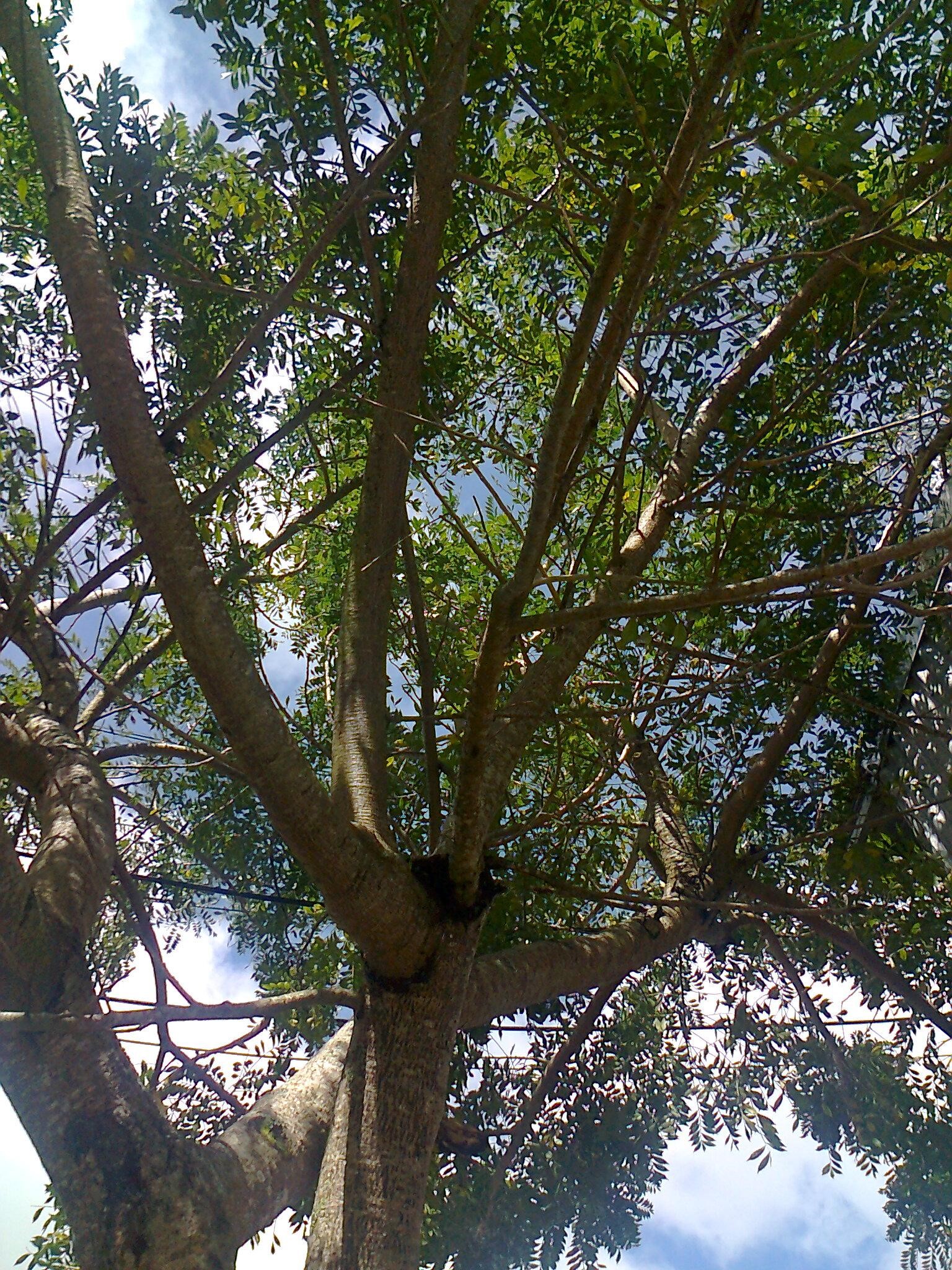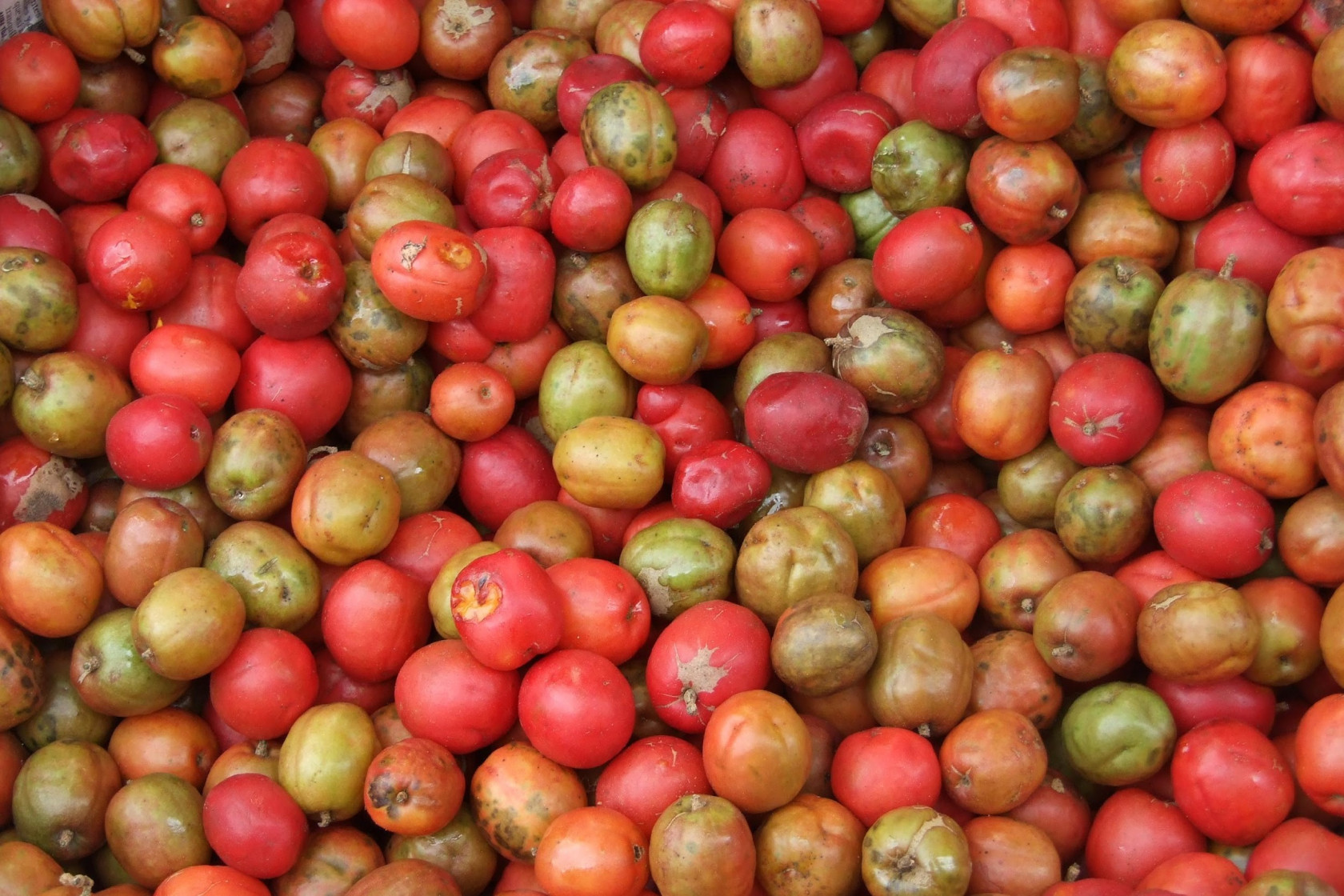Purple mombin
 Common Name: Purple mombin, red mombin, red plum, spanish plum
Common Name: Purple mombin, red mombin, red plum, spanish plum
Scientific Name: Spondias purpurea
Climate: Hot, temperate
Plant Description: Jocote is a deciduous tree with a very thick trunk, it can grow to be 20 meters tall.
The bark is wrinkly and rough with an olive green to dark gray color.
The branches are very brittle and with thick canopy, the leaf looks like an oval spear about 4 cm long, with bright red, purple and yellow colors when sprouting.
Jocote flowers are very small, almost unnoticeable at plain sight, and formed by 4 or 5 petals in masculine, feminine and hermaphrodite.
The fruit or drupe (fleshy fruit with just one stone or seed) grows alone or in groups of three. The flesh is yellow, quite juicy and bittersweet. The stone is not edible.
The jocote is of Mesoamerican origin, spanning from México to Brazil.
Cultivation: There are 2 varieties of Jocote.
Summer jocote grows in low land, at an altitude range from 0 a 800 meters. This variety usually bears fruit from February to May.
Corona jocote, lives well at an altitude range between 900 and 1200 meters. It bears fruit from August to October.
Both varieties need 5 to 6 months of rain a year.
Jocote propagates well thru seed, although the most common and recommended way is by cuttings. It is common to get cuttings from pruning, it’s important to be sure they come from healthy and productive plant. The cuttings should be 0.5 to 1.2 meters long and sowed at a 30º to 45º angle.
Jocote can be cultivated as monoculture or with grains, vegetables and other fruit trees like coffee. It grows in shallow soil with scarce nutrients and organic matter and prefers sandy clay types of soil.
Jocote should be sowed preferably in April, and the terrain must be prepared by mid March. It prefers full sun, for a bounty of flowers and fruit. Avoid shade from other trees.
There are 4 different pruning styles that can benefit the jocote tree. Formative pruning promotes lateral growth, maintenance pruning keeps the tree compact and uniform, pruning to promote plant health removes plagues, disease and damaged branches, pruning to optimize production favors producing branches and prevents the tree from growing too tall.
 Uses: Jocote leaves contain high levels of iron and can be used to make infusions.
Uses: Jocote leaves contain high levels of iron and can be used to make infusions.
The fruit can be eaten fresh or in sugar preserves like jelly, in juice, salted brine or vinegar preserves, fermented for wine or vinegar, or as bakery supplement.
The fruit has a diuretic effect as it helps eliminate toxins, prevents water retention and has antispasmodic properties.
The cooked fruit is used as a remedy to cure scabies, dysentery, chronic diarrhea relief and reduces swelling produced by intestinal gas in babies.
Juice made from fresh leaves is used to treat ulcers. Cooked leaves are used to control a fever. Anti-bacterial properties in fresh leaves make them ideal for treating skin conditions like wounds, swelling, burns, and rashes.
Pests and Diseases: Jocote suffers from diverse plagues like the Jocote driller that can kill it, fruit fly and mites that damage the leaves.
Phytoplasm, is like a virus that is transmitted by insects and a fungus can attack the roots with deadly results.
References:
- elsalvador.com. (2019, March 28). Los beneficios poco conocidos del jocote. Noticias de El Salvador - Elsalvador.Com. https://www.elsalvador.com/vida/salud/los-beneficios-poco-conocidos-del-jocote/579373/2019/
- Jocote: propiedades, siembra, fruto, calorías y más. (2019, March 13). Hablemos de Flores, Orquideas, Rosas, Gladiolos, Tulipanes y Mas. https://hablemosdeflores.com/jocote/
- Programa nacional de frutas de El Salvador. (2005, April). Guia tecnica del cultivo del Jocote. Ministerio de Agricultura y Ganaderia. https://repiica.iica.int/docs/B0222E/B0222E.PDF
- Wikipedia contributors. (2020, June 8). Spondias purpurea. Wikipedia. https://en.wikipedia.org/wiki/Spondias_purpurea
En español: Jocote
